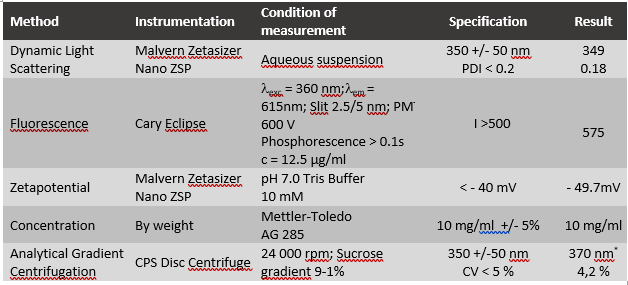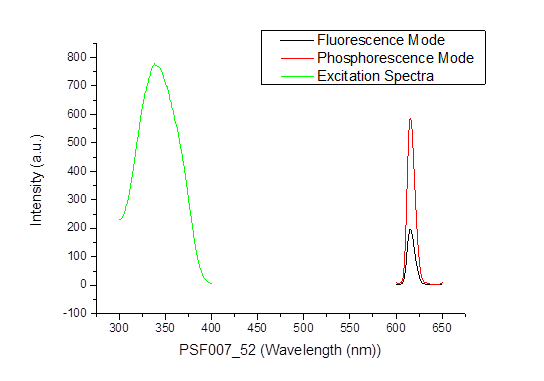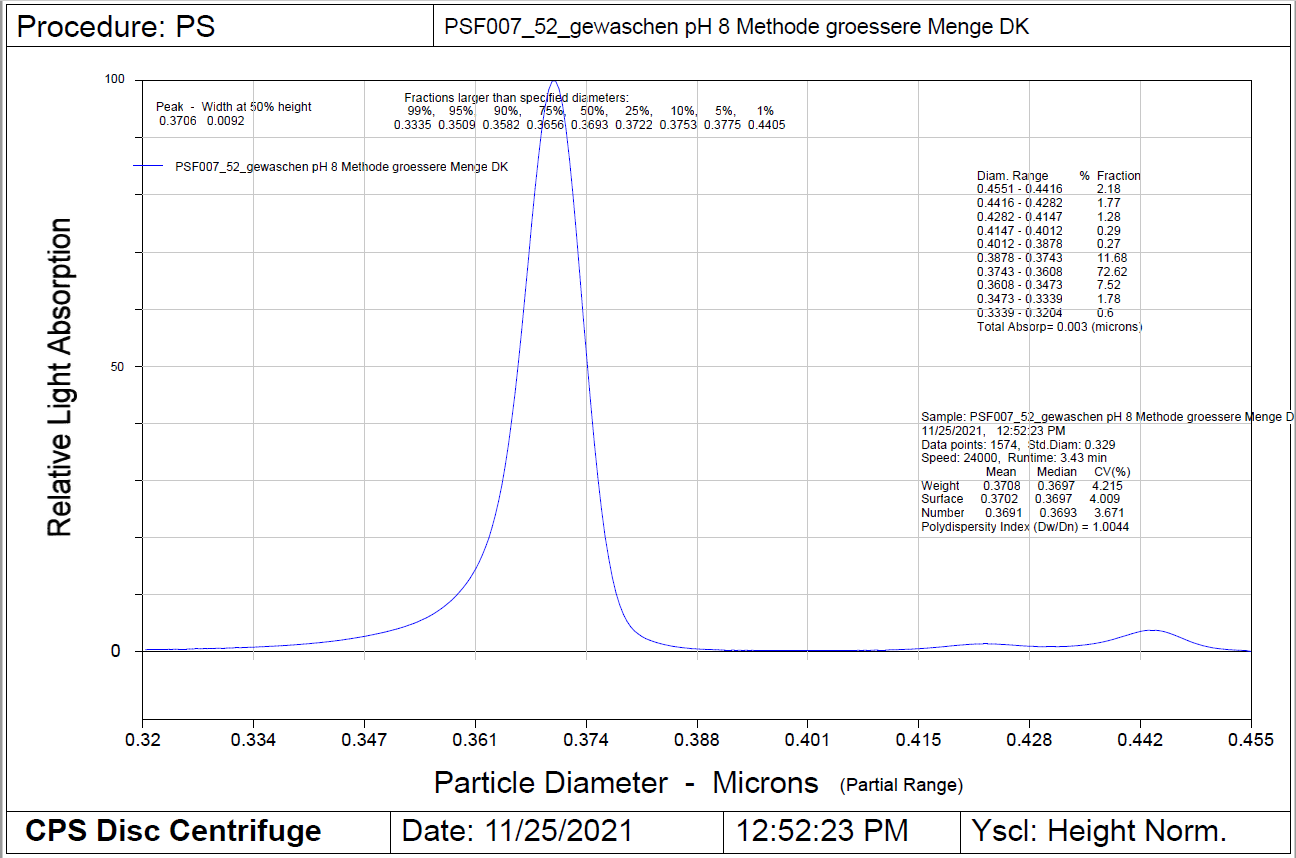Fluorescent Nanopartikel Red (Eu) carboxylated
The red fluorescent (europium) nanoparticles are Polystyrene spheres having functionalized carboxylated surfaces for the covalent attachment of ligand. They have been used to develop highly sensitive later flow assays based on time-resolved (TRF) fluorescence and as particulate labels in multicolor assays. The beads are supplied as ~1% solids (w/v) aqueous suspensions
To view products details please click on the Product Listing tab.
Fluorescent Nanopartikel Red (Eu) carboxylated



Fluorescent Nanopartikel carboxylated coupling protocol
1 MATERIALS• 0.1 % Particles 300 nm (Eu, QD, Blue, Green, Orange, Yellow)
• deionized water (DI water)
• PEG 20k
• Tween20
• anti-SARS 302 2 g/L (provided by FZMB)
• EDC
• S-NHS
• MES buffer
• Sodium acetate buffer (NaAc)
• PBS
• Ethanolamine
• Sodium azide (azide)
Required solutions:
• Activation buffer (AB): 5 mM MES pH 5.5; 1 mM azide*
• Reaction buffer (RB): 5 mM NaAc pH 5.5; 0.5 % PEG 20k; 1 mM azide*
• Wash buffer (WB): 10 mM Hepes pH 7.4; 0.5 % PEG 20k; 0.01 % Tween20; 1 mM azide*
• 15 % PEG 20K
• 0.3 % Tween 20
• 10 mg/mL EDC in AB 5 mM MES (use immediately!)
• 10 mg/mL S-NHS in AB 5 mM MES (use immediately!)
• 25 % / 4 M Ethanolamine in DI water (use immediately!)
*The Sodium azide is an optional component and is used for storing the buffer solutions in the fridge.
2. PARTICLE ACTIVATION
• 250 µL particle suspension (0.1 %)
• centrifuge for 3-5 min at 12400xg **; discard supernatant
• add 235 µL AP, resuspend carefully and use Ultrasonic bath 10-30 s ***
• add 5 µL EDC and 10 µL S-NHS (c 10 mL/mL in AP)
• incubate 30 min at room temperature on a shaker 1600 rpm
• centrifuge for 3-5 min 12400xg ** and discard supernatant
3. COVALENT COUPLING
• resuspend the pellet carefully in 0,25 mL RB, use ultrasonic bath 100% 10-30 s, if necessary ***
• add 3.13-6.25 µL of antibody (concentration 2 g/L, 3.13 µL for research, 6.25 µL for customers and QD)
• incubate for 60 min at room temperature on a shaker 1600 rpm
• add 5 µL of 25 % Ethanolamine, 5 µL 15 % PEG 20K and 5 µL 0.3 % Tween20 to the mix
• incubate for an additional 30 min at room temperature on a shaker 1600 rpm
• centrifuge for 3-5 min at 12400g **; discard supernatant
• wash twice with 250 µL WB, use ultrasonic bath 100% 30 s, if necessary ***
• resuspend in 250 µL WB (final concentration theor. 0.1 %)
• in the case of large losses due to washing, take up in less WB (e.g. 200 µL) and determine the concentration by UV/Vis (10 µL+190 µL MilliQ in a micro cuvette)
** Suggested centrifugation speed for Batch PSF007_52, it can be further optimized to reduce agglomeration. Note: Centrifugation speed might change after activation and coupling. *** Always check if it is at room temperature otherwise the Particles or the antibody can be damaged, ultrasonic bath is mostly optional but can improve performance
Fluorescent Nanopartikel Red (Eu) carboxylated
| Code | Amount (ml) | Price (in €) |
|---|---|---|
| FNRC01-01 | 1 | 200 |
| FNRC01-05 | 5 | 800 |
| FNRC01-10 | 10 | 1.300 |
| FNRC01-100 | 100 | 10.000 |
